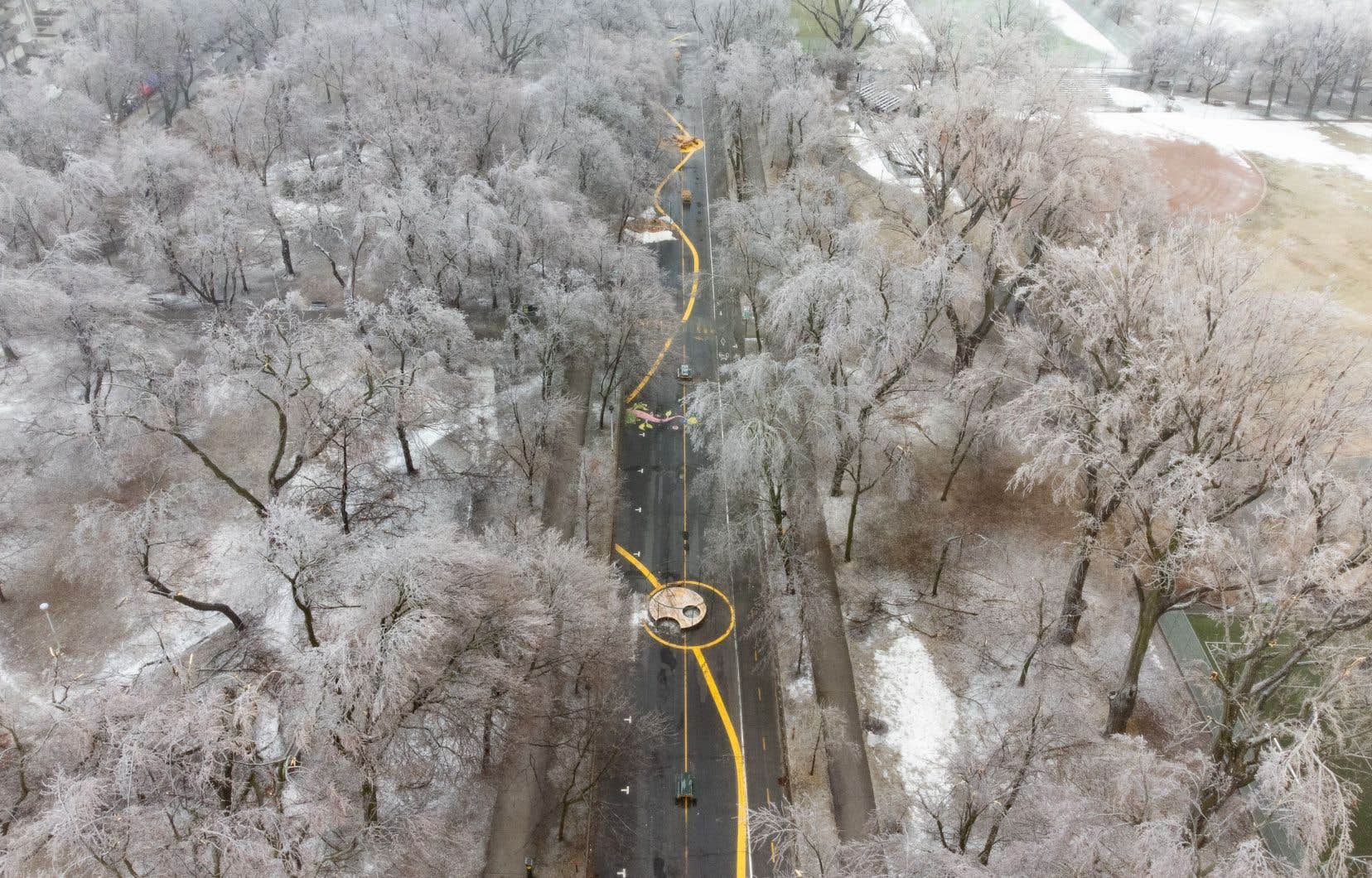Hydro-Quebec was on high alert on Monday. Its teams of meteorologists were trying to predict the size of the coming storm, while those responsible for monitoring the transmission and distribution network were preparing equipment and staff to embark, as soon as possible, on the marathon of connections taking place at the ‘actual hour.
“Let’s face it, it’s impossible to know the precise quantity of ice that will fall in a specific place. Any more than we can predict how a branch will affect a line when it falls,” says Yann Coutu, operations manager of the Distribution Network Coordination Center at Hydro-Québec.
Nevertheless, since Monday, the team he coordinates is following the situation closely. From their facilities on avenue de l’Esplanade — just across from Jarry Park in Montreal — the team is planning different scenarios. On one wall of the room, screens form a mosaic that projects not only a map of the evolution of the weather, but also of power outages in the province.
It was from there that Hydro-Québec observed the storm coming and planned the reconnections even before there was the first outage: “At first, we thought that the Outaouais would be hit harder. Afterwards, it moved to Montreal, whereas very often, from experience, it goes through the Richelieu-Sherbrooke or Laurentides-Tremblant corridors. »
Prepare for the worst
In the realm of forecasts, nothing is 100% certain, he recalls: “One or two degrees Celsius makes all the difference. This is why there are 5 millimeters of ice that fall or 20 millimeters and the impact on the network is no longer the same. »
So for lack of certainty, Hydro-Quebec prepared for the worst scenario. “Yesterday, we told our teams of fitters from all over Quebec to come home very early [jeudi] morning with their suitcase. They didn’t know where they were going to go, but they knew they were going to move,” he says.
Teams from the east of the province arrived in Montreal early Thursday. Why not have mobilized these numbers on Wednesday evening? “While the storm is unfolding, there is no point in deploying 1,000 people on the ground. There are security reasons, but also, we don’t yet know everything that will, over time, have an impact on the network. »
At the end of the afternoon on Thursday, nearly 550 teams – around 1,100 employees – are at work in the field: fitters, “jointers” responsible for the underground network and pruners. Their shift, for the most part: 4 p.m.
In addition, there are teams of subcontractors specializing in this type of situation. “We call them Storm teams,” explains Coutu. Among them: Anger Electrics and Gagnon Line. “These are often former Hydro-Quebec employees who can work elsewhere, like in Texas, when there is a storm,” he says.
“The first 24 hours are those that set the pace and launch us on our way to go,” said the one who worked until 11 p.m. Tuesday, and who from 5 a.m. Wednesday was back at his post.
By order of priority
While Yann Coutu’s team paints a picture of the situation and mobilizes staff across the province, it is another division — the Distribution Operations Center — that coordinates field operations in the city. .
Samuel Harvey-Lavoie is in charge: “Our role is to be in constant communication with the teams in the field and to target the priorities, the places where we must act first. In the secure room where his team is at work, we can see a dozen operators. Each of them is surrounded by six screens that allow them to have an overview of what is happening in their respective areas.
Their decisions are based on a protocol established according to priorities. “All Hydro-Québec customers belong to one of the seven priority categories. P-1s are those that have priority: hospitals, essential services, pumping stations, etc. For those, we organize ourselves so that breakdowns are dealt with immediately. »
At the other end, there are the P-7s, of which the residential sector is a part. “Once we have dealt with the outages that affect priority sectors, then we will generally deal with the outages that allow us to restore electricity for the greatest number of people at the same time. An operator will work to restore a breakdown that affects 1,500 people before dealing with a breakdown that affects two or three residences,” says Mr. Harvey-Lavoie.
